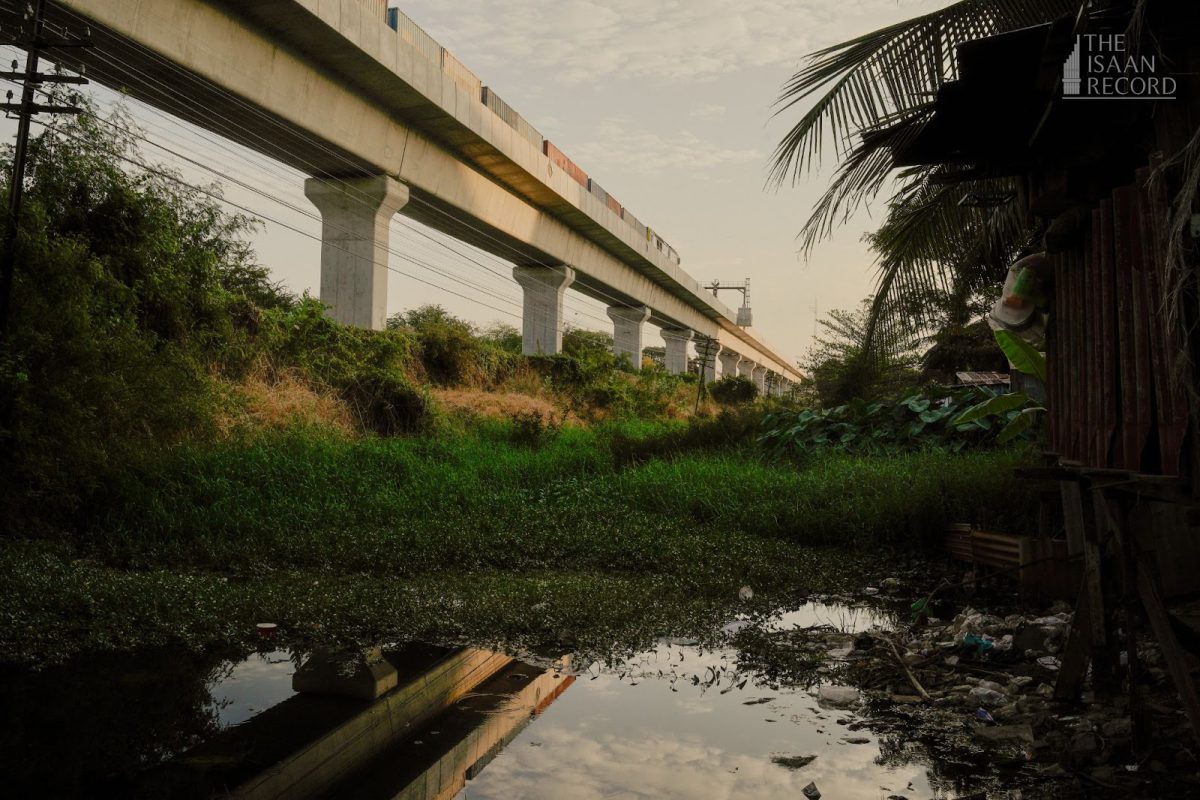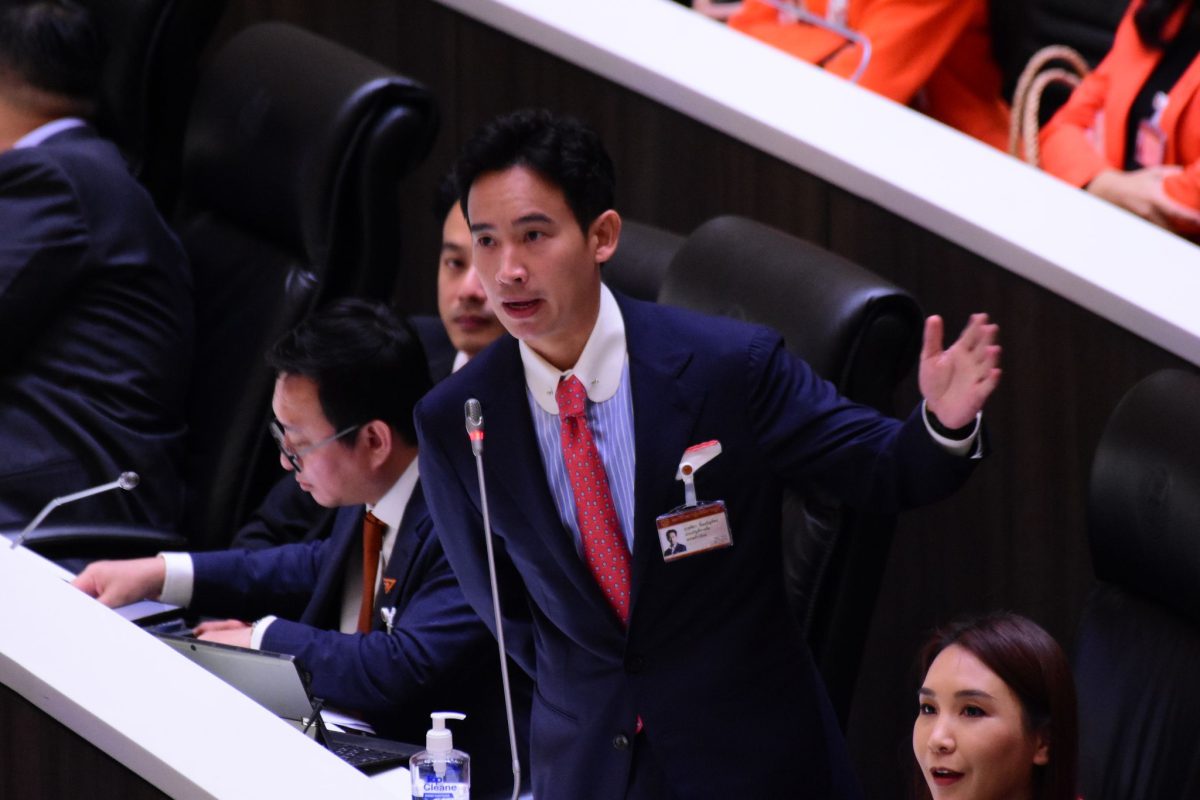
Construction of the high-speed rail project may open up new horizons for Thai society. But it also has important collateral damage: the destruction of a unique urban space that has played an important part in Thailand’s visions of a possible democratic future. Guest contributor Eli Elinoff reflects on the loss of railway communities to the high-speed train project in Khon Kaen and beyond.
Story by Eli Elinoff
During the last few weeks, The Isaan Record has once again reported a rising threat of evictions and relocations for the communities built along Thailand’s railway tracks as the country begins construction on its new high-speed rail project in Isaan. These stories emphasize the ways that large-scale infrastructural transformations in Isaan’s cities are having dire effects on some of their poorest residents. These evictions are assaults on these residents but they are also more than that: they are also efforts to tear up some of Thailand’s most vital spaces of democratic experimentation and debate. In this, the evictions are not just local tragedies but events with national significance.
I have been studying these communities from the vantage points of Khon Kaen for nearly fifteen years. When I began my research, many residents told me that they felt that they were deeply misunderstood by their fellow citizens. They explained that their communities were looked down upon, seen as ugly and dirty. They told me that government officials often regarded them as criminals, illegal trespassers, and illegitimate residents in the city.
These perceptions mirror those expressed by critics of the poor who mischaracterize communities resisting their own eviction, dispossession, and displacement by state projects as obstructions to national development. These sentiments misunderstand the history of Thailand’s urban railway settlements and the role these citizens play in the making of the city and the polity.
There have been people living along Khon Kaen’s railway tracks in one fashion or another since the lines themselves were built. Early settlers were frequently employed by the railway authority who sometimes encouraged them to settle along the tracks to ensure themselves a readily available labor pool. New residents purchased rights from agricultural lease holders, paid rent (officially and unofficially) to various authorities, or simply made land claims on their own as was common across Isaan for much of the region’s history.
Heterogenous settlement practices expanded as the region’s cities grew during the second half of the 20th century. Residents claimed space along the tracks by various means, but often in relation with local and national authorities and always in tandem with the urban growth itself. In this sense, what counts as “railway land” has always been entangled with historical patterns of urbanization and the lives of the people who lived along the tracks who helped build the city. In other words, the simplistic claim that this strip of land does not belong to residents is untrue. Instead, the railway system, Thailand’s urban centers, and these communities developed in relationship with one another.
As these communities have grown, residents have, at various points, paid rent to local or national authorities or both. In Khon Kaen residents have been engaged in complex negotiations with various state and local authorities to legalize their status for almost three decades. Although these negotiations have rarely been straightforward, they have, until recently, allowed for slow and steady improvement in the lives and houses along the tracks.
Working alongside a range of activist allies, especially the activists from the Four Regions Slum Network and representatives from the Community Organizations Development Institute (and its associated networks), has enabled residents to establish permanent infrastructural connections for most communities. These connections have, in turn, improved the quality of life along the tracks and lessened the perception that these spaces are anything other than regular working-class neighborhoods. These activities have also allowed residents to apply for funds to improve their homes and develop local community organizations. In some cases, these negotiations have allowed residents to sign leases making their claims to their land durable by continuously paying rent directly to the railway.
What might surprise most outsiders is the way that residents have, at almost every turn, sought opportunities to stay on their land, to work together, to participate in local and national projects of improvement, and to improve their cities. Residents participate in a range of initiatives from public health projects to economic loan schemes to municipal improvement efforts. They also contribute to urban governance in a range of local forums. Contrary to public perception, residents have a deep sense of civic pride and strong attachments to values associated with democracy—fairness, participation, and equality. Indeed, it is my sense that some of the most complex experiments with what democracy is and might yet be in Thailand are being administered and debated along the tracks.

In this way, the stakes of the ongoing displacements, evictions, and dispossessions taking place along the tracks are far higher than they might first appear: These evictions matter for the people involved because they are losing their homes and their livelihoods that are the result of decades of personal and collective investment. They matter for the cities they are occurring in because the communities are vital parts of what makes urban life function. Residents of these communities are the day laborers, vendors, drivers, construction workers, housekeepers, and urban recyclers who make the city work.
My research also argues that these evictions should also matter to Thailand on the broadest level because these communities are the roots of the country’s future democracy. While the nationwide student movements are, of course, at the leading edge of the country’s current democratic push, it will be the work done by residents in places like those along the tracks that actualize the highest promises of that system. It is in these places that residents have already been debating how democracy might work on the ground to improve the lives of some the country’s most marginalized citizens. Indeed, these communities have been at the leading edge of both fomenting and then negotiating the kinds of local political changes that help make the country more equal.
Democracy, as I began to understand it from my work along the tracks, is not a fixed system to be finally achieved, but instead something that must constantly be worked towards. It is a political system generated out of the hard work of asserting equality, debating with one another, disagreeing, and acting to set up spaces and institutions that reflect the importance of such practices and values. Residents’ visions of democracy, fairness, and equality offer Thailand a vision of a polity that has not yet come into being. Democracy is, as their history shows, a future promise.
The high-speed train project has benefits on one level. But it will also bring with it the loss of these communities, yet another act that tears up the country’s democratic future at its most fragile but important roots.
Note: The Isaan Record welcomes diverse viewpoints on issues related to the Northeast. The views expressed by guest contributors on The Isaan Record Facebook page or website are the views of the authors and do not necessarily represent the views of the organization, its editorial team, or any of its partner organizations.




